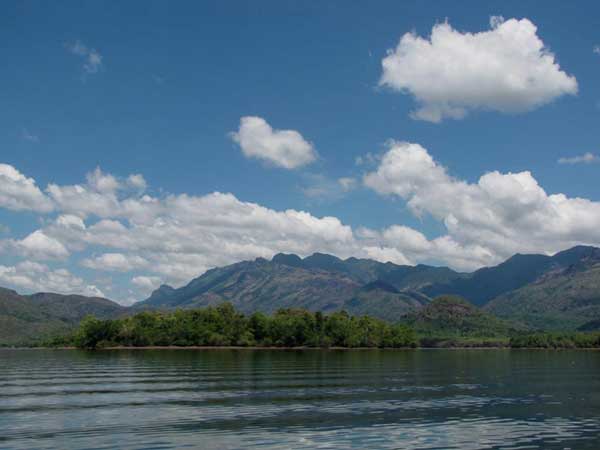
Photo courtesy Davidson Sargunam >>
Excerpts from a report by environmental educator Davidson Sargunam (Nagercoil) titled Land Alienation of the tribe: Rich forest lands, poor tribal people.
The Kaani tribal community inhabits the forests of Kanyakumari in 48 Settlements in the Western Ghats in Agasthiar Biosphere Reserve. Once a nomadic tribe, they have settled in the deep forests and jungles. They draw their livelihood sustenance from forest resources and the entire life revolves round forest ecology.
The Government of Tamil Nadu earlier allotted 5 acres of land to each forest dwelling Kaani tribal family. The land is rich with organic top soil with all kinds of nutrients. As the forests form the tail-end of the Western Ghats, it receives both the Monsoons, South West and North East. But in course of time, a lion’s share of the land has changed hands that many tribal families have to vacate the land or living in a small area of just few cents- and are alienated from their own soil.
Earlier, the lands have no title, as all the lands are located inside Reserve Forests. Recently the government is allotting the lands with titles to the inhabitants. Many of the lands are under the custody of non-tribal people from the plains. With the ulterior, vicious motive to secure the lands, some non-tribes men illegally keep some Kaani women as paramour, though they have a legal wife and children in the nearby villages. […]The illiterate, ignorant and gullible and economically tribal people can never withstand the onslaught and rowdyism of the mafia gangs and land grabbers.
The exploitative elements make them sign on blank papers, initially taking the forest land illegally for lease and never return them, acquiring illegal sale deeds by paying pittance or wooing them with alcohol or small amount of money. Undoubtedly, the tribal land issue has become the single major human rights issue created by the non-tribesmen. […]
As there is an accelerating trend of Human Versus Animal Conflict in the forest agricultural lands, the mafia gangs lend money to the Kaani tribal people at exorbitant rates, for which the tribal people have to give all their agricultural produce as rubber, areca nut, coconut, spices, horticultural products and banana. […]
Source: email dated 10 June 2019
Courtesy S.S.Davidson
Learn more
Articles on Adivasi culture in Folio Special issue
Contents on this website by and about Prof. Ganesh Devy
eBook | Background guide for education
eBooks, eJournals & reports | eLearning
Education and literacy | Right to education
Figures, census and other statistics
Forest Rights Act (FRA) | Nishad (Nishada, Sanskrit Niṣāda, “tribal, hunter, mountaineer, degraded person outcast”) | Vanavasi (Vanvasi, Vanyajati)
Human Rights Commission (posts) | www.nhrc.nic.in (Government of India)
International Day of the World’s Indigenous People
Irish Journal of Anthropology: Special issue on Adivasi identity
Misconceptions | “Casteism” and its effect on tribal communities
Remembering Birsa Munda: The charismatic tribal leader who shook the British Empire – Jharkhand
Scheduled Tribes | Classifications in different states
Tribal groups (Indian tribal communities)
Tribal Politics – adivasi culture, language, and religion in Encyclopedia of India
United Nations Declaration for the Rights of Indigenous Peoples